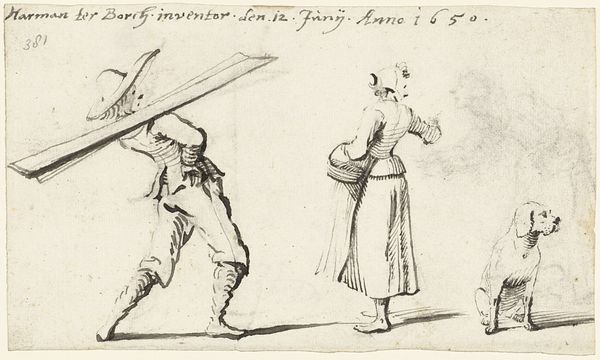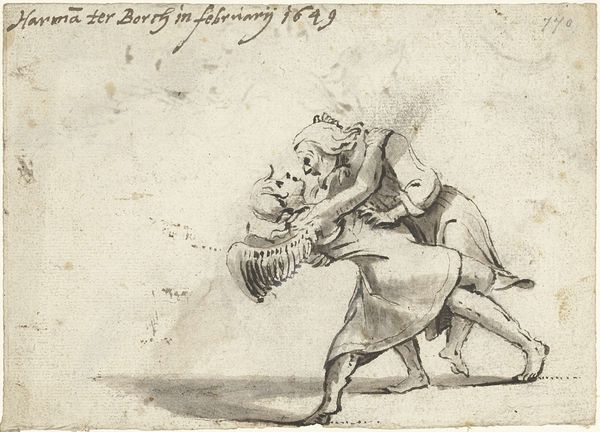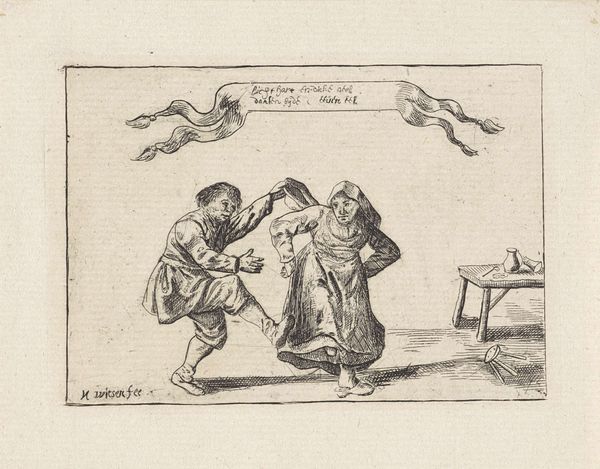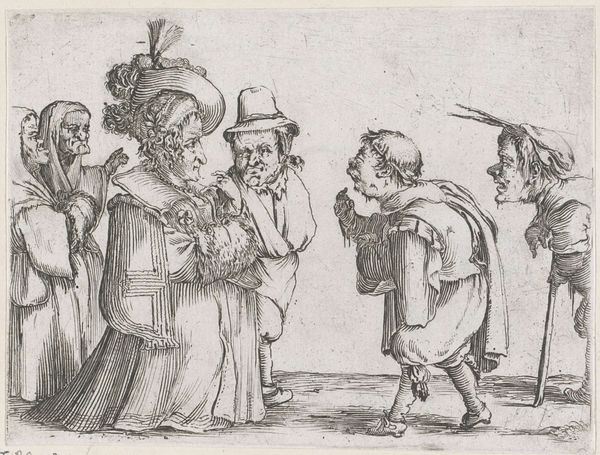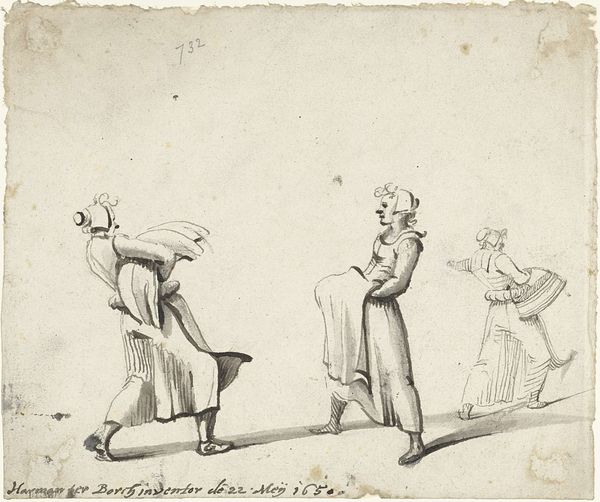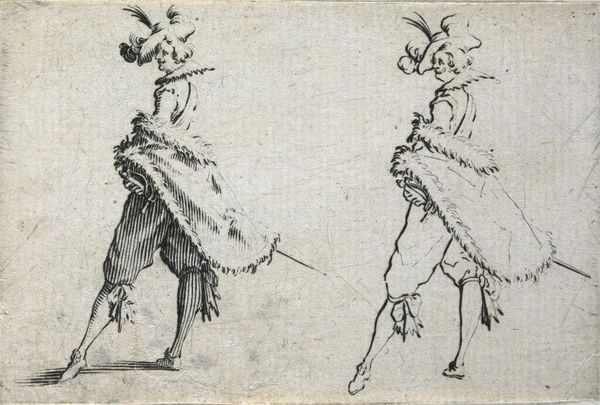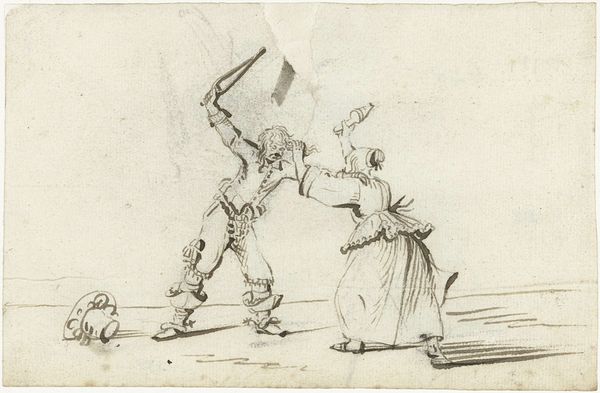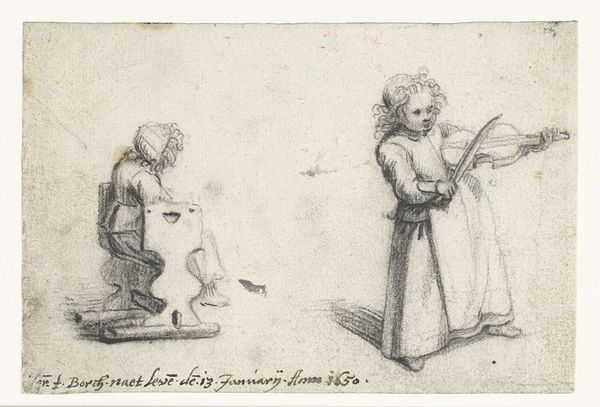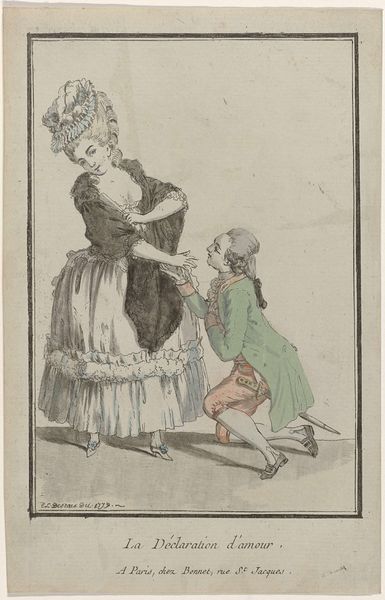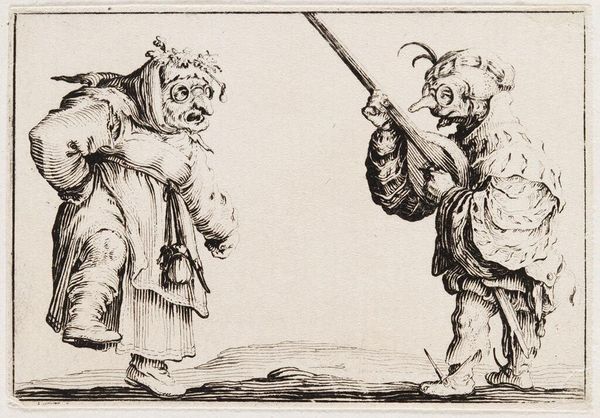
drawing, paper, ink
#
portrait
#
drawing
#
dutch-golden-age
#
pencil sketch
#
figuration
#
paper
#
ink
#
genre-painting
#
realism
Dimensions: height 102 mm, width 155 mm
Copyright: Rijks Museum: Open Domain
Curator: What a deceptively simple drawing this appears to be, doesn't it? It’s titled *Two Women Carrying Poultry, From Behind*, thought to have been created by Harmen ter Borch around 1649, and it’s currently held in the Rijksmuseum. It's a drawing, a genre scene really, rendered in ink and pencil on paper. My first impression is that the rough linework conveys a sense of brisk activity, the subjects are definitely on the move, caught mid-stride, but overall, it seems like a rather unromantic, practical glimpse into everyday life. Editor: Yes, the directness is what strikes me as well, almost journalistic. And that hasty sketch-like quality. While on first view, it might seem ordinary, look closely: Ter Borch imbues these women, anonymous as they are from behind, with the dignity of labor. It reminds us how much of our lives are consumed by the practical aspects of survival. Consider, for instance, the weight these women carry—literally and figuratively. What’s compelling is not merely what they’re carrying, but what those fowl and baskets might signify culturally and economically within 17th-century Dutch society. Curator: Absolutely. The presence of the poultry suggests more than a simple grocery run. It points to a whole network of agrarian commerce that fueled the Dutch Golden Age. This image, as casual as it seems, opens a window onto the economic structures underpinning society at the time, particularly the vital role of women in these networks. Note also the contrasting figures – the figure in the wide brimmed hat appears to be carrying empty baskets back from market and also, significantly, looks as if he is in shadow, compared to the woman who seems to glow with a bright, light filled outline. Editor: Right, this focus on the mundane also serves as a silent commentary. In a society obsessed with grandeur, art, and trade, ter Borch chose to immortalize the ordinary contributions of these two individuals, almost as a nod to social realism. This seemingly informal portrayal gains significance in the socio-political canvas of the era. Through the visual symbols of fowl, we delve into understanding gender roles and economics. It’s all right there in this unassuming image. Curator: I completely agree. These aren’t just figures with poultry. They're emblems of everyday resilience. I love that in rendering them in an unembellished way, it brings forward themes of labour and the daily lives of women in society that have become enduring emblems. Editor: It is an invitation to re-evaluate our ideas and preconceptions of the Dutch Golden Age by concentrating on such common everyday themes that the image imparts an uncommon understanding of historical narratives.
Comments
No comments
Be the first to comment and join the conversation on the ultimate creative platform.
